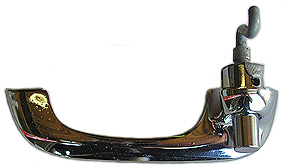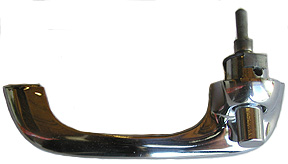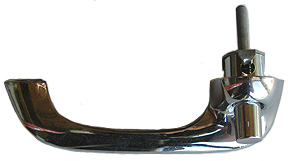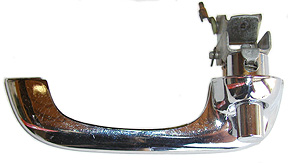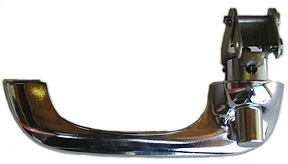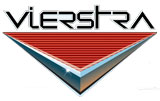Installation Instructions for the F7078 One Wire Voltage Regulator
This is a 60 ampere device. It will not work on any alternator that has a higher ampere rating.
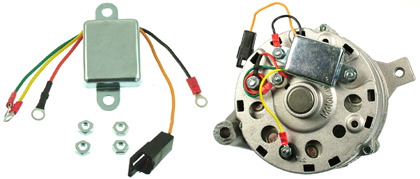
You must furnish a 1965 – 1972 Ford Alternator. We only provide the voltage regulator that mounts on the back of it.
1. Disconnect battery.
2. VERY IMPORTANT: Add a 10/32″ nut on each ground stud on the back of the alternator. These will act as stand offs and prevent the wires from getting pinched against the case and shorting out.
3. Connect the black wire to one of the ground studs while mounting the regulator and secure assembly with 2 more 10/32″ nuts.
4. Connect the red wire to the large red insulated terminal labeled ” bat “.
5. Connect the green wire to the terminal labeled ” fld “.
6. Connect the yellow wire to the terminal labeled ” sta “.
7. Install alternator on the engine.
8. After installing the alternator and one wire voltage regulator, there is only one wire involved to make the alternator charge the battery. One 10 gauge wire from the back of the alternator – BAT terminal to the positive side of the starter relay. That is it. The alternator will now charge.
9. If you want to use the in-dash warning light, it must be connected to the Orange wire on the new regulator.
10. Now the problem is what to do with the wires on the old generator? Since you don’t use the wires, you may remove them or just tape them back. However, if you want to hook up the warning light, you might want to use one of the existing wires to do that.
We have found that using the white wire from the field terminal of the old generator, which is now disconnected can be connected to the Orange wire of the new regulator. Now all we have to do is find the other end of this white wire and the wire that leads to the warning light, connect those two ends together and the warning light should function. The other end of the white wire is connected to the FIELD terminal of the original voltage regulator. The warning light wire is a small yellow/black wire connected to the ARMATURE terminal of the old voltage regulator. Disconnect both of these wires from the old voltage regulator and splice the ends together. The warning light should now function.
Now, what about the old voltage regulator and the rest of the wires going to it? The easiest solution is to just leave it in the car as is. However if you want to remove it, please read on. Again, we already know that the rest of the wires coming from the old generator aren’t to be used so they can be removed, taped back or left connected. They can be left connected as there is no current on them.
There are some other wires on the old regulator that would have to be dealt with if you want to remove the old regulator. The main ones of concern are the 2 wires on the BATTERY terminal. These are large wires and carry +12 Volts to the ignition switch. If the old voltage regulator is to be removed, these 2 wires must be spliced together to get the +12V to the ignition switch. If the old regulator is removed, there may be an issue with the horn relay wire. Since Ford was inconsistent from year to year with the wiring of the horn relay, you will have to examine this connection to determine how to resolve it if there is a problem.
11. If a warning light is not desired, the orange wire may be cut off flush with the case of the regulator if desired.
12. Ensure engine block, alternator and chassis are all grounded properly.
13. Reconnect Battery.
14. When engine is first started, it may be necessary to rev the engine beyond idle to turn the warning light off and initialize the alternator. This is a function of the alternator not the regulator. I.E. The alternator should be replaced as it was not properly overhauled/rebuilt.
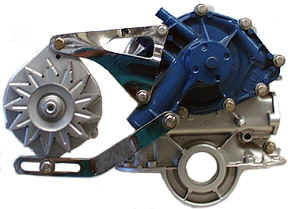 Copyright 1997 through 2011 Falcon Enterprises. All Rights Reserved
Copyright 1997 through 2011 Falcon Enterprises. All Rights Reserved
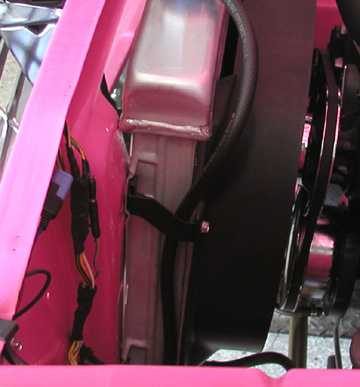 Yes, the top tank is very close to the core support and may even be touching.
Yes, the top tank is very close to the core support and may even be touching.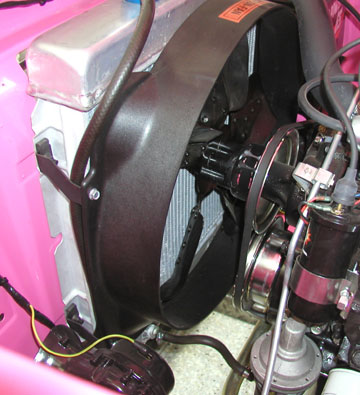 We notice that a 1 1/2 inch spacer is required to get the fan in it’s proper location. Also note that this vehicle utilizes the correct (1965 C-4 ) transmission cooling lines with rubber hose connections to the transmission cooler.
We notice that a 1 1/2 inch spacer is required to get the fan in it’s proper location. Also note that this vehicle utilizes the correct (1965 C-4 ) transmission cooling lines with rubber hose connections to the transmission cooler.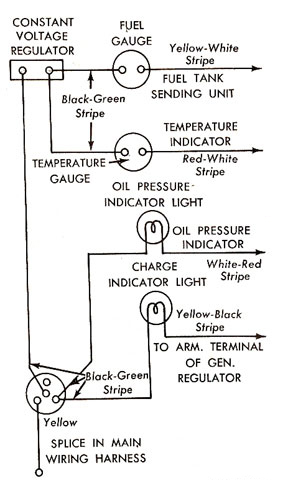 Troubleshooting Fuel and Temperature Gauges
Troubleshooting Fuel and Temperature Gauges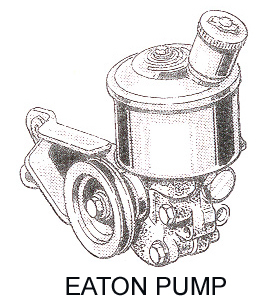
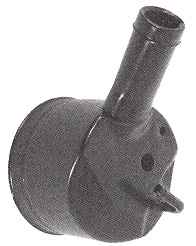
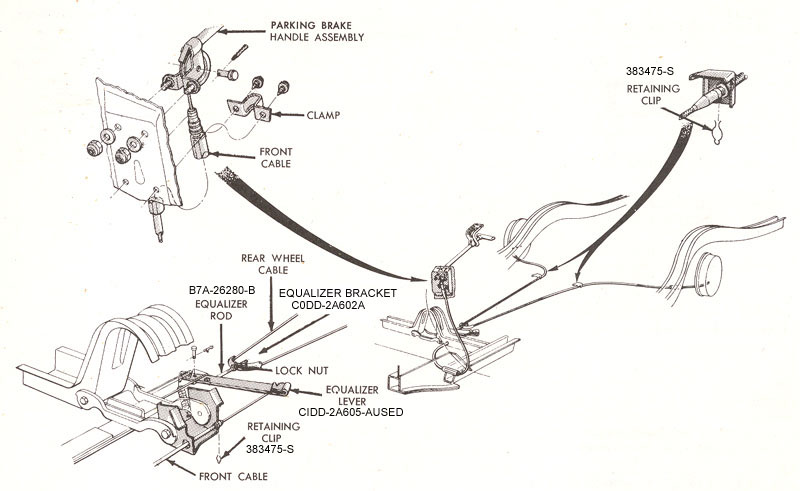

 Copyright 1997 through 2011 Falcon Enterprises. All Rights Reserved
Copyright 1997 through 2011 Falcon Enterprises. All Rights Reserved